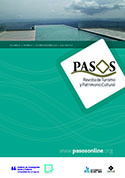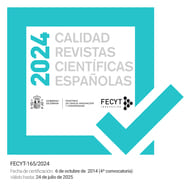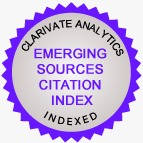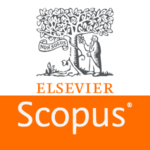COVID-19. Crisis análogas, impacto en turismo y comportamiento del viajero a lo largo de la historia
DOI:
https://doi.org/10.25145/j.pasos.2023.21.053Palabras clave:
covid-19, comportamiento del turista, turismo, pandemia, desastres naturales, terrorismo, cronologíaResumen
El COVID-19 ha supuesto una de las peores crisis vividas por el turismo a nivel mundial. Las llegadas internacionales en 2020 respecto a 2019 descendieron un 70%. Solo dos acontecimientos previos generaron un impacto similar: la crisis sanitaria generada por el SARS-COV-1 en 2003 y la depresión económica de 2008. El objetivo de este estudio es comprobar cómo el papel del viajero es un eslabón clave en la propagación de patógenos a lo largo de la historia, revisando las enfermedades infecciosas que han supuesto cambios en la sociedad o han constituido amenazas. A su vez, se ha realizado una analogía con acontecimientos que han ocasionado impactos negativos en turismo, concretamente desastres naturales y ataques terroristas. Para ello se ha empleado un estudio de revisión de la literatura donde se han analizado más de 90 fuentes de carácter histórico y científico en las áreas de conocimiento de historia, geografía, turismo y medicina. Esta investigación pretende dotar al sector turístico de la capacidad de prever y poder tomar decisiones anticipadas que permitan manejar mejor crisis similares futuras.
Descargas
Datos de publicación
Perfil evaluadores/as N/D
Declaraciones de autoría
- Sociedad académica
- PASOS. Revista de Turismo y Patrimonio Cultural
- Editorial
- Instituto Universitario de Investigación Social y Turismo. Universidad de La Laguna (España) - Instituto Universitario da Maia ISMAI (Portugal)
Citas
Abdel-Azim, T. S. (2010). The relationship between the perception of risk and the decision-making process of travel of French tourists: the case of Egypt. Tourismos, 5(2), 29-47.
Aimable, E. A. E., y Rosselló, J. (2009). The short-term impact of 9/11 on European airlines demand. European Journal of Tourism Research, 2(2), 145-161.
Aon (2018). Mapa global de terrorismo y riesgo político. https://n9.cl/2wjhn
Athukorala, P. C., y Resosudarmo, B. P. (2005). The Indian Ocean tsunami: Economic impact, disaster management, and lessons. Asian economic papers, 4(1), 1-39.
Bac, D. P., Bugnar, N. G., y Mester, L. E. (2015). Terrorism and its impacts on the tourism industry. Revista Română de Geografie Politică, 17(1), 5-11.
BBC News (9 de abril de 2016). Brussels explosions: What we know about airport and metro attacks. https://n9.cl/ml8s7
BBC News (26 de abril de 2019). Sri Lanka attacks: Who are the victims? https://n9.cl/7r8b9
Becken, S., y Hughey, K. F. (2013). Linking tourism into emergency management structures to enhance disaster risk reduction. Tourism Management, 36, 77-85.
Becken, S., Zammit, C., y Hendrikx, J. (2015). Developing climate change maps for tourism: essential information or awareness raising? Journal of Travel Research, 54 (4), 430-441.
Beutels, P., Jia, N., Zhou, Q. Y., Smith, R., Cao, W. C., y De Vlas, S. J. (2009). The economic impact of SARS in Beijing, China. Tropical Medicine y International Health, 14, 85-91.
Blaikie, P., Cannon, T., Davis, I., y Wisner, B. (2014). At risk: natural hazards, people's vulnerability and disasters. Routledge.
Blažin, N., Gavrilov, M. B., Markovi, S. B., Jani, S., Miloševi, Z. S., Luki, T., y Hrnjak, I. (2014). The tsunami of 26th December 2004: the impact on tourism trends in Southeast Asia. WIT Transactions on Ecology and the Environment, 181, 175-186.
Buckley, P. J., y Klemm, M. (1993). The decline of tourism in Northern Ireland. Tourism Management, 14(3), 184-194.
Canalis, J. (11 de junio de 2015). El virus MERS pone en alerta a la industria turística de Asia. Hosteltur. https://n9.cl/8fnu4
CAPMAS. Central Agency for Public Mobilization and Statistics. (2016). Egypt in numbers. https://n9.cl/rnnhj
Carter, W.N. Disaster Management: A Disaster Manager’s Handbook; Asian Development Bank: Manila, Philippines, 2008. https://n9.cl/vtfzl
CDC. Centers for Desease Control and Prevention. (2019a). 1957-1958 Pandemic (H2N2 virus). https://n9.cl/k33qe
CDC. (2019b). 1968 Pandemic (H3N2 virus). https://n9.cl/0deua
Chang W. K. (1969). National influenza experience in Hong Kong, 1968. Bulletin of the World Health Organization, 41(3), 349–351.
Chen, M., Zhang, H., Liu, W., y Zhang, W. (2014). The global pattern of urbanization and economic growth: evidence from the last three decades. PloS one, 9(8), e103799.
Choe, Y., y Schuett, M. A. (2020). Stakeholders’ perceptions of social and environmental changes affecting Everglades National Park in South Florida. Environmental Development, 35, 100524.
Crawford, D. (2012). Recovering from terror: The Egyptian and Balinese experiences. Worldwide Hospitality and Tourism Themes, 4(1), 91-97.
Crosby, A.W. (2003). The Columbian exchange: Biological and cultural consequences of 1492. Westport, CT: Praeger Publishers.
Cunha B. A. (2004). The cause of the plague of Athens: plague, typhoid, typhus, smallpox, or measles? Infectious disease clinics of North America, 18(1), 29–43. https://n9.cl/vvv9p
De Mallevoüe, D. (14 de noviembre de 2015). Six attaques en 33 minutes: chronologie d'une nuit d'horreur. Le Figaro. https://n9.cl/2eri7
Dragičević, D., Radić, M. N., y Grbić, L. (2018). Terrorism as security challenge in tourism development. In Faculty of Tourism and Hospitality Management in Opatija. Biennial International Congress. Tourism y Hospitality Industry (pp. 64-75). University of Rijeka, Faculty of Tourism y Hospitality Management.
Dodds, R., y Butler, R. (2019). The phenomena of over tourism: A review. International Journal of Tourism Cities. https://n9.cl/vrm3a
DSN, Departamento de Seguridad Nacional. (2016). Atentado terrorista en el aeropuerto internacional de Estambul. https://n9.cl/ry8ij
DSN (2017a). Atentados en Londres. https://n9.cl/cnogg
DSN (2017b). Incidente terrorista en Manchester. https://n9.cl/rja1n
DSN (2017c). Nota informativa sobre los atentados en Barcelona y Cambrils. https://n9.cl/7u6sm
DSN (2017d). Atentado en Estambul. https://n9.cl/zecuk
ECDC. European Center for Disease Control (2021). Distribution of confirmed cases of MERS-CoV by place of infection and month of onset. https://n9.cl/sa0vh
El Economista. (5 de mayo de 2019). El turismo se desploma en Sri Lanka tras los atentados terroristas del Domingo de Pascua. https://n9.cl/dew3h
El País (23 de julio de 2005). Matanza en Sharm el Sheij. https://n9.cl/e4jo0
El País (9 de noviembre de 2005). Al menos 67 muertos en un triple atentado suicida contra hoteles de lujo de Jordania. https://n9.cl/zk2o4
Exceltur (2004). Valoración empresarial de los atentados del 11-M en el sector turístico español. https://n9.cl/e0ler
Faulkner, B. (2001). Towards a framework for tourism disaster management. Tourism management, 22(2), 135-147.
FMI. Fondo Monetario Internacional. (2020). World Economic Outlook, October 2020: A Long and Difficult Ascent. https://n9.cl/ldah7
García de Cortázar, Fernando (14 de noviembre de 2018). La Historia y el terrorismo, resumen ponencia. Fundación Jiménez Abad. https://bit.ly/3vZAUWb
Glantz, M. H. (2008). Hurricane Katrina as a" teachable moment". Advances in Geosciences, 14, 287-294.
Goodrich, J. N. (2002). September 11, 2001 attack on America: impact on tourism security. Journal of Travel and Tourism Marketing, 11(4), 1-12.
Huang, J. H., y Min, J. C. (2002). Earthquake devastation and recovery in tourism: the Taiwan case. Tourism Management, 23(2), 145-154.
Homeland Security and Governmental Affairs, US Government (2016): Hurricane Katrina: A nation still unprepared. https://n9.cl/4vh3c
Horlick-Jones, T., Fortune, J., y Peters, G. (1991). Measuring disaster trends part two: Statistics and underlying processes. Disaster Management, 4(1), 41-44.
Hosteltur (16 de febrero de 2014). Atentado en Egipto contra turistas. https://n9.cl/oo8sf
Hosteltur (26 de junio de 2015). 38 personas han muerto en un atentado en Túnez. https://n9.cl/0yk5r
IATA. International Air Transport Association. (2001). Annual Report 2001.
Insee (2017). Bilan èconomique 2016 – Île-de-France. https://n9.cl/1zogn
Intelligence and Security Committee (2006). Report into the London terrorist Attacks on 7 July 2005. https://n9.cl/xaroy
JNTO. Japan National Tourism Organization. (2011). White Paper on Tourism in Japan, 2011. https://n9.cl/4amsu
Khan, U., Mehta, R., Arif, M. y Lakhani, O. (2020). Pandemics of the past: A narrative review. J Pak Med Association, 70(3), 34-37.
KTB. Turkey Ministry of Culture and Tourism (2020). Border Statistics Annual Bulletin 2019.
Le Monde (8 de enero de 2015). Attentat contre « Charlie Hebdo »: le récit d'une journée noire. https://n9.cl/5b4ea
Le Monde (19 de agosto de 2016). Le bilan de l’attentat de Nice porté à 86 morts. https://n9.cl/0awli
Leelawat, N., Suppasri, A., y Imamura, F. (2015). Disaster recovery and reconstruction following the 2011 Great East Japan Earthquake and Tsunami: a business process management perspective. International Journal of Disaster Risk Science, 6(3), 310-314.
Liu, A., y Pratt, S. (2017). Tourism's vulnerability and resilience to terrorism. Tourism Management, 60, 404-417.
Louisiana Tourism Satellite Account. (2006). https://n9.cl/m4npe
Mahy, E. (11 de Agosto de 2017). Manchester businesses recovering after attack impact. BBC News. https://n9.cl/0zk8v
Maley, J. (21 de febrero de 2006). Drop in visitors as July 7 effect hits London’s tourist trail. The Guardian. https://n9.cl/njhty
Martín Plaza, A. (11 de marzo de 2014). Los atentados del 11M que sacudieron España. RTVE. https://bit.ly/39t8me3
McAleer, M., Huang, B. W., Kuo, H. I., Chen, C. C., y Chang, C. L. (2010). An econometric analysis of SARS and Avian Flu on international tourist arrivals to Asia. Environmental Modelling y Software, 25(1), 100-106.
McKercher, B., y Chon, K. (2004). The Over-Reaction to SARS and the Collapse of Asian Tourism. Annals of tourism research, 31(3), 716–719.
Meneses, R. (29 de diciembre de 2018). El turismo, objetivo de impacto. El Mundo Internacional. https://n9.cl/2962q
Naciye, G. y Akbiyik, A. (2020). Impacts of COVID-19 on global tourism industry: A cross regional comparison. Tourism Management Perspectives, 36, 100744.
National Commission on Terrorist Attacks upon the United States. (2004). Final Report of the National Commission on Terrorist Attacks Upon the United States. https://n9.cl/4u29r
New Orleans Conventions and Visitors Bureau (2015). https://n9.cl/y6dr0
Pagazaurtundúa, M. (2017). Libro blanco y negro del terrorismo en Europa. Parlamento Europeo.
Ramiro, D., García, S., Casado, Y., Cilek, L. y Chowell, G. (2018). Age-specific excess mortality patterns and transmissibility during the 1889-1890 influenza pandemic in Madrid, Spain. Annals of Epidemiology 28, 267-272.
Rapoport, D. C. (2013). The four waves of modern terror: International dimensions and consequences. An international history of terrorism: Western and non-Western experiences, 282-231.
Richter, L. K. (2003). International tourism and its global public health consequences. Journal of Travel Research, 41(4), 340-347.
Rosselló, J., Becken, S., y Santana-Gallego, M. (2020). The effects of natural disasters on international tourism: A global analysis. Tourism management, 79, 104080.
Sáez, A. y Parra, J. (2020). From the Antonine Plague to the Cyprian Plague: Scopes and consequences of global plagues in the Roman Empire in the 3rd century AD. Revista Chilena de Infectología. 37(4), 450-455.
Scarpa, R., Caso, F., Costa, L., Passavanti, S., Vitale, M., Trojaniello, C.A., Asciertot, P. (2020). May the analysis of 1918 influenza pandemic give hints to imagine the possible magnitude of Corona Virus Disease-2019 (COVID-19)? Journal of Translational Medicine, 18, 489.
Schwartz, R. A., y Kapila, R. (2020). Pandemics throughout the Centuries. Clinics in Dermatology.
Sihn, K. H. (2017). Reorganizing Hospital Space: The 1894 Plague Epidemic in Hong Kong and the Germ Theory. Korean Journal of Medical History, 26(1), 59-94.
Sönmez, S. F. (1998). Tourism, terrorism, and political instability. Annals of tourism research, 25(2), 416-456.
Sri Lanka Government (2019). Monthly Tourist Arrivals Reports 2019. https://n9.cl/d01yy
Triana, J. (7 de mayo de 2016). Ataque terrorista en Estambul contra turistas, en directo. El Periódico. https://n9.cl/icrdk
UNWTO. (2002) The impact of the September 11th attacks on tourism: The light at the end of the tunnel. https://n9.cl/9a063
UNWTO. (2020) Tourism data dashboard, Global and regional tourism performance. https://n9.cl/kvdb
Veréb, V., Nobre, H., & Farhangmehr, M. (2020). Cosmopolitan tourists: the resilient segment in the face of terrorism. Tourism Management Perspectives, 33, 100620.
Visit Brussels (2017). Tourism Annnual Report. https://n9.cl/vj23s
Wagner, D., Klunk, J., Harbeck, M., Devault, A., Waglechner, N., W Sahl, J.,… Poinar, H.(2014). Yersinia pestis and the Plague of Justinian 541–543 AD: a genomic analysis. The Lancet Infectious Diseases, 14, 319-326. https://n9.cl/18upm
World Bank (2004). Bali, beyond the tragedy. https://n9.cl/y5vdq
World Bank (2006). International tourism, number of arrivals – Jordan. https://n9.cl/xfyku
World Bank (2016). World development indicators - United States of America. https://bit.ly/3oW1EW2
World Bank (2018). International tourism, number of arrivals – Tunisia. https://n9.cl/fqjgjz
World Bank Data (2019a). Urban population (% of total population). https://n9.cl/v519r
World Bank Data (2019b). International tourism, number of arrivals – United Kingdom. https://n9.cl/mh67r
World Bank Data (2020) International tourism arrivals data board: Thailand, India, Indonesia, Sri Lanka and Maldives. https://n9.cl/ykk7q
WHO. World Health Organization. (2003). Severe Acute Respiratory Syndrome (SARS). https://n9.cl/uplxn
WHO (2009) Middle East respiratory syndrome coronavirus (MERS-CoV). https://n9.cl/hpf8b
WHO (2020a) Timeline of Covid-19 response. https://n9.cl/iswvq
WHO (2020b) Ebola virus disease: Democratic Republic of the Congo. https://n9.cl/evzpp
Descargas
Publicado
Cómo citar
Número
Sección
Licencia
Derechos de autor 2023 Sara Grasa Herreruela, María Francisca Blasco López

Esta obra está bajo una licencia internacional Creative Commons Atribución-NoComercial-SinDerivadas 4.0.
Confirmo que el trabajo es original (de mi/nuestra autoría), y que no se someterá a otras revistas o publicaciones hasta la resolución definitiva del proceso de revisión en PASOS, RTPC.
Autorizo la publicación de mi trabajo por PASOS, RTPC de acceso abierto y gratuito en cualquiera de los formatos que estime oportunos, por un plazo indeterminado y a título de colaboración no remunerada.
Asimismo, el/los autor/es entiende/n que el trabajo publicado podrá vincularse o depositarse en cualquier servidor o ser incluido en otras publicaciones (republicación), siempre y cuando el nuevo lugar y/o la nueva edición referencie la publicación original y reconozca la autoría y la propiedad del copyright de las publicaciones de PASOS RTPC.
Los/as autores/as entienden que se realizará una comprobación de plagio-autoplagio, pudiendo retirarse el artículo en cualquier momento del flujo editorial










